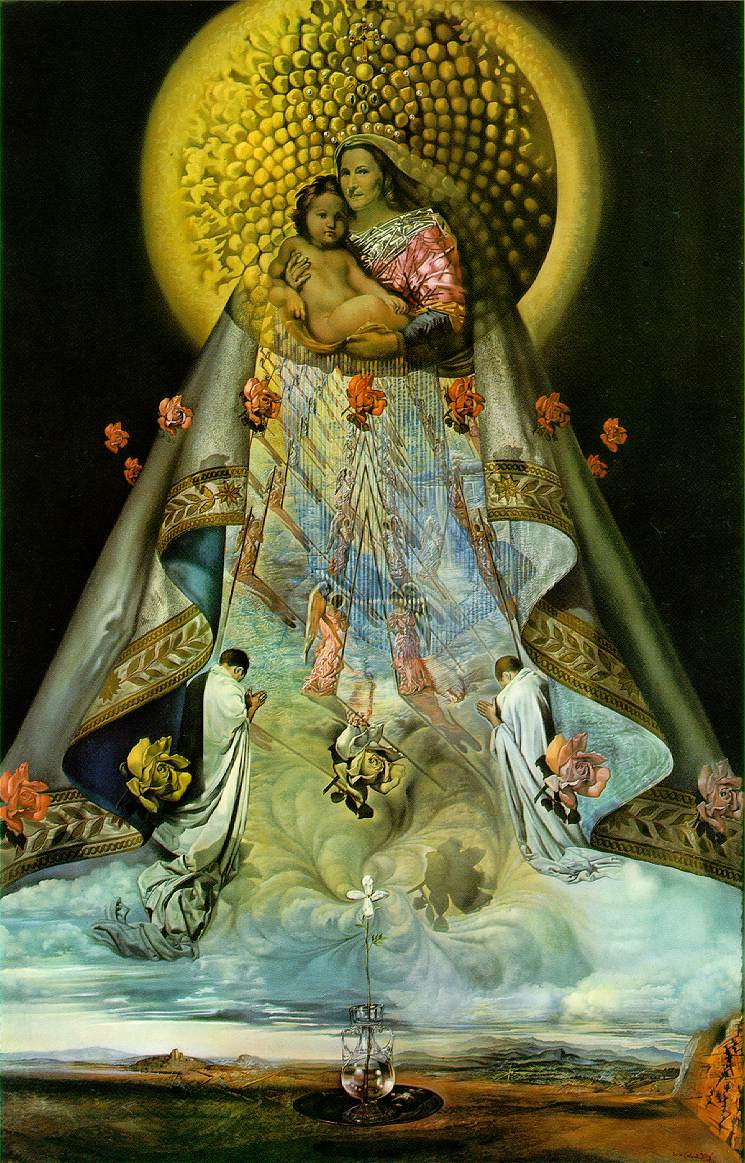log in
Enter site
Login to use Arthive functionality to the maximum
Virgin Mary of Guadalupe
Salvador Dali • Painting, 1959, 200×130 cm
Description of the artwork «Virgin Mary of Guadalupe»
The late creative period of Dali was marked by the seal of mysticism that was previously uncharacteristic for him, which critics called "nuclear." After the end of World War II, the turmoil associated with the events in Hiroshima and Nagasaki, Dali converted to Catholicism and even met with the then Pope, Pius XV. At one time, Dali more than once attributed to himself the divine nature, declaring without undue modesty: “I, Dali, will declare the unity of the universe as my creation, showing the spirituality of all things.”
The muse and beloved Dali, Gala, whom he, in dedication to The Diary of a Genius, calls only his tranquil Elena Troyanskaya, Saint Elena and Gala Galatea, the only “mythical woman of our time”, who occupied a central place in the artist’s work. It is not surprising that Dali repeatedly depicts her in the form of the Virgin in the works of the Madonna of Port Lligat and The Virgin of Guadalupe.
As for the latter, this large canvas, created in 1959, is painted with such meticulous precision that it resembles a masterpiece created in the studio of Michelangelo, Leonardo or Raphael. Every smallest detail is written with exquisite realism, giving a photographic sensation of composition in general and Virgo (aka Gala) in particular.
According to Catholic legend, once upon a time, the medieval Mexican peasant Juan Diego was visited by a vision of a young woman while he was on a hill in the desert near Mexico City. The woman told him to build a church exactly where they turned to him. When he told the local bishop about this event, he asked Diego to provide evidence, and the peasant had no choice but to return to the desert to meet with Virgo again. He told her about the request of the bishop, to which she replied: "Bring these roses with you, growing behind you." Cutting off several flowers, Diego wrapped them in his poncho and went back. Opening it with the bishop, instead of roses, he found a portrait of the Virgin Mary appearing to him.
That is why on the maforia, the quadrangular cloak of the Virgin Mary, Dali depicts roses, and behind the Virgin Mary's head are sunflower seeds, in which, upon closer examination, you can notice red and green precious stones that are part of her crown.
The canvas reveals the meaning of the term “Dalan continuity” - intentionally repeating plots in various paintings by Salvador Dali. So, below we see a jasmine flower placed in a vase against the background of a swirling atomic cloud.
The same image - jasmine (a symbol of purity) against the background of atomic clouds can be seen in the pictureSantiago El Grande (1957). And here are two figures on the sides, clasped hands in prayer, as if left the canvas"The Last Supper" (1955).
Iya Beroeva


